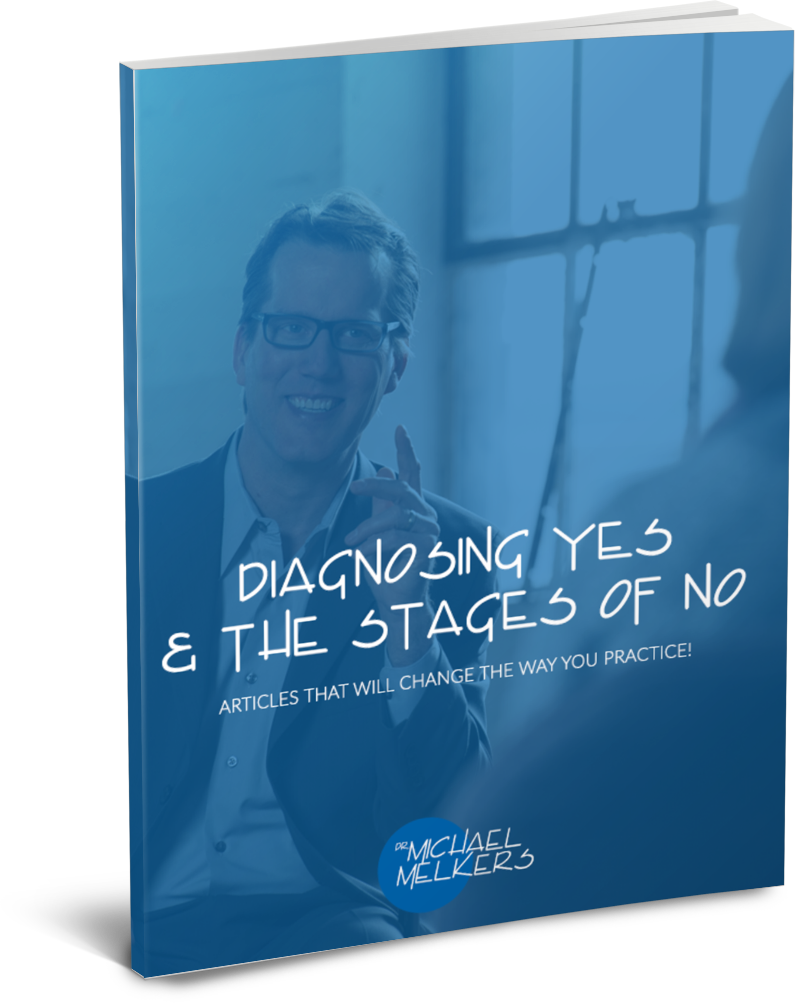Decisions
Some of the most frequent questions that I hear before, during & even after courses has to be “So-when do we mount?”… “Why do we mount??”… “Which patients should we be mounting??” I know-because I have asked and continue to ask myself the same questions even after over 20 years of clinical practice & 12 years of teaching the subject. I think that I will continue to pursue the answers to these questions for another 12 and 20 years.
My own pendulum on application has swung from one extreme to the other in my 20+ years of clinical practice. There was a time, when every case that I did was done with the triple tray-whether it be quadrant or full arch. Then I began my commitment to occlusal studies and the pendulum swung quite hard to the others-so extreme. I mounted every case with full arch models, a face bow, a CR recording and programmed condyle or inclination. It did not matter if I was restoring a single maxillary lateral incisor on a class 2 patient with a half a meter of over jet that would never contact another tooth. Looking back, I laugh at my own fanaticism.
Each of their approaches have their time and place to be appropriate. The question remain-which, when, why and for whom. I will go over the which,when & for whom, but first I would like to share the why.
Regardless of the clinical application or the chosen method of mounting- be it triple tray or fully adjustable articulation, my decision and choice of modality will come down to efficiency and economics, as long as I can achieve the same excellent outcome. When I look at decisions between instrumentation choices, I need to consider how long it will take me for the initial restorative records & balance that with the time and frustration savings of intraoral adjustments. If I try to save time by using a quick set PVS with a triple tray, but it takes me 20 minutes of introral adjustments and ends with a compromised outcome, was there any benefit to the approach? On the other side of the pendulum, if we have a single unit posterior restoration with sufficient anterior guidance or anatomy that can be matched off of the adjacent teeth, is there any advantage of going through full arch models & face bow recording? If we can achieve the same excellent outcome, what advantage is it to spend more time taking the records then it would take for minor, if any intraoral adjustments and polishing?
So-when do I mount? I do so when it will help me achieve a goal. Will it help me do something more efficiently? Will it help me see something that I cannot see or figure out yet? I know that this may seem oversimplified, but they are my guiding questions when making my decisions.
My current preferences are:
Restoratively..
For single posterior units, with an otherwise intact dentition that can support the occlusion I use a triple tray. Even for second molars you ask?? Yes-even for second molars. I do leaf gauge screen then-which is the subject of another blog and article.
Anytime I am doing two posterior units, with few exceptions, or any anterior unit, I am doing face bow mounted, programmed full arch models. These may or may not be mounted in a seated/CR position. In many cases, I find MIP or the patients natural bite to be just fine.
So-when do I use “CR.” First of all-I am not a huge fan of the term. I really prefer the criteria that define it-comfortable…stable…repeatable. I guess I would rather call it “CSR” but that is a whole other story.
Mounted, programmed models with a mounting that is done in a seated position is something that I use, when indicated or allowed in the diagnostic phase. I use this when I cannot “see it” or need to figure out how things do fit, what changes are possible and which options make the most sense to me.
From a restorative standpoint, I will ‘always’ be using a seated position when doing full arch or full month rehabilitation. For other circumstances, my decision tree is in flux based on my evolving experience, application and the uniqueness of each case. What I would like to do is present a variety of cases and decision tree discussions on how I make these decisions and why. My rationale may be different tomorrow. As Dr. Peter Dawson said “if you quote me, please date me.” I am learning along with the rest of the profession
All of that being said, there is another powerful and frequently overriding factor that can completely override or come in conflict with our well-thought-out plans and decision tree processes. That of course is the patient. Even in situations that present the possibility for more complex, comprehensive records and treatment planning there are simply some patients that are either not ready for a more involved approach were simply do not desire to do so.
I know that this answers some questions & may create many others. Most of all I hope it can help start or continue some excellent discussions.
As always-we would love to hear your comments & please feel free to share using the link buttons below!








